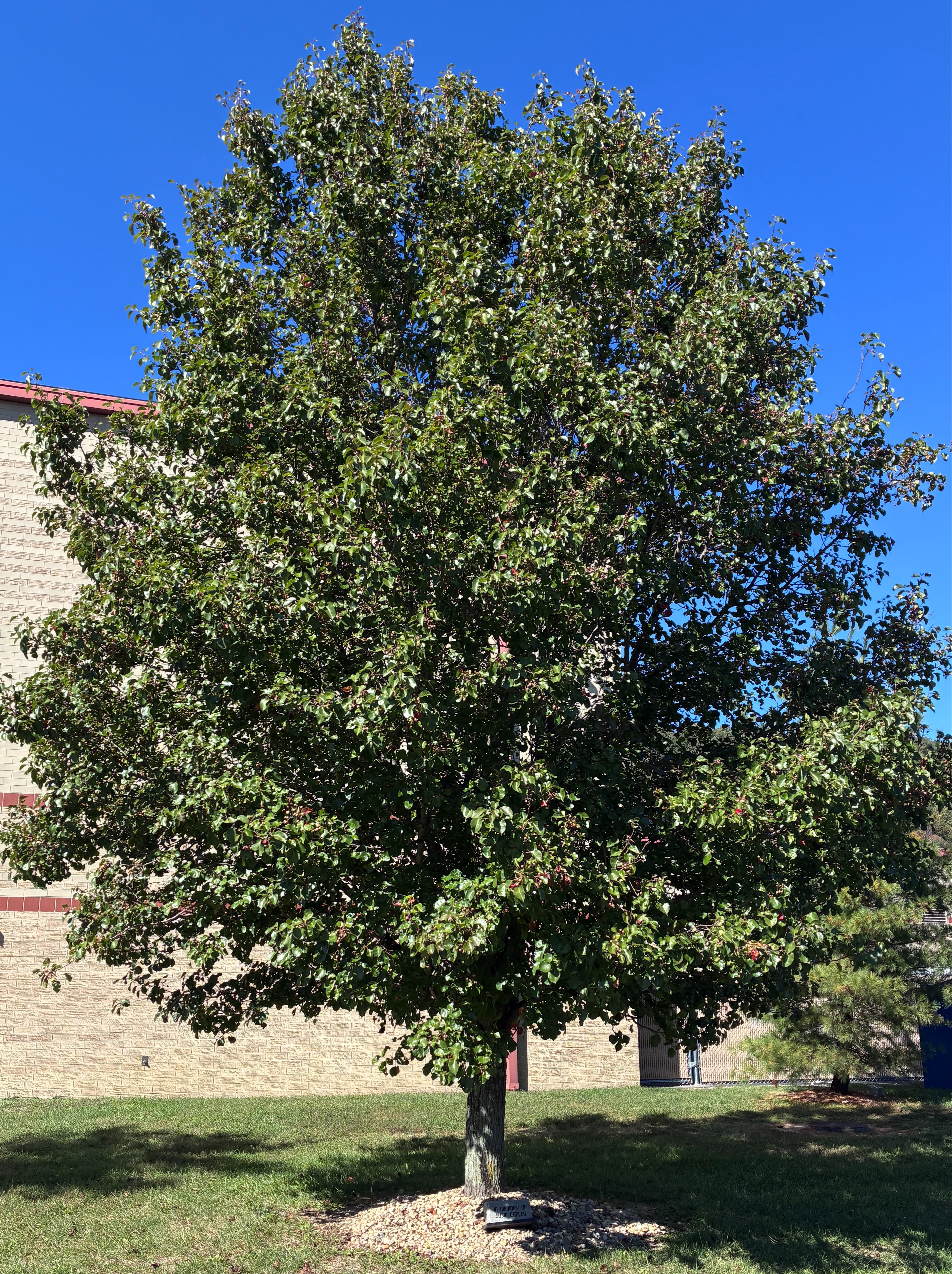
Photo Credits: Dr. Loretta W. Harvey
Scientific Name: Pyrus calleryana
Common Name: Bradford Pear Tree or Callery Pear Tree
Type: Deciduous Tree
Family: Rosaceae
Native Range: China and Taiwan
USDA Zone: 5 to 9
Height: 30 to 50 feet
Spread: 20 to 35 feet
Bloom Time: Early spring (typically April)
Bloom Description: Profuse clusters of white, five-petaled with a distinct, malodorous (unpleasant) smell.
Sun: Full sun
Water: Dry to medium; tolerates some drought once established
Maintenance: Pruning is often required to try and improve the weak structure; generally considered a high-maintenance tree due to structural failure.
Leaf Type/Shape: Alternate, simple, oval/heart-shaped, glossy dark green with wavy or slightly toothed margins; excellent reddish-purple to bronze-red fall color.
Attracts: Birds (which disperse the seeds)
Other Info:
Tolerate: Drought, clay soil, air pollution, urban conditions, various soil types (including alkaline)
Invasive: Highly invasive. The 'Bradford' cultivar was thought to be sterile, but it readily cross-pollinates with other Pyrus calleryana cultivars, producing viable, fertile, seedlings that aggressively invade native habitats.
Climate: Adaptable to a wide range of temperate climates corresponding to its large USDA hardiness zone range of 5-9. It is tolerant of urban conditions, including compacted soil and air pollution. However, early spring flowers can be damaged by frost
Noteworthy Characteristics: Early and Profuse Spring Bloom- One of the first trees to bloom, providing a spectacular, dense display of white flowers. Good Fall Color- Foliage offers excellent and reliable fall color, ranging from red and orange to dark maroon. Disease Resistance-The 'Bradford' cultivar has respectable resistance to fire-blight (a common pear disease). Thornless Cultivar-The 'Bradford' cultivar is specifically thornless, though its wild, invasive descendants often have thorns.
Problems: Major Structural Weakness- The most significant issue. The branches grow with narrow, acute angles (tight crotches) that are prone to splitting, breakage, or disintegration from strong winds, ice, snow, or even the tree's own weight. This often limits its lifespan to 15-20 years. Invasiveness- The cross-pollination of cultivars has led to the widespread ecological problem of Callery Pear seedlings (wild, often thorny trees) invading natural areas and forming dense, competitive thickets. Many states now ban or discourage its planting. Offensive Odor- The flowers are known for a distinctively rancid or unpleasant smell. Thorny Thickets- The invasive wild types that result from cross-pollination are often very thorny, making them difficult to remove and manage.
Economic Uses: Ornamental/Landscape Tree- Its primary and historic use was for ornamental purposes in residential and commercial settings, particularly as a flowering and shade tree for urban areas due to its fast growth, uniform shape, and tolerance for poor soil and pollution. Rootstock Research- The species (Pyrus calleryana) was originally brought to the U.S. for research, in attempts to breed fire-blight resistance into the common fruiting pear (Pyrus communis).
Donated by:
In memory of: Susie Conley
Date Planted:
Arboretum Catalog Number: 0007-B
Photo Credits: Dr. Loretta W. Harvey

